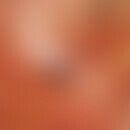DefinitionThis section has been translated automatically.
Half-lifeThis section has been translated automatically.
18 h
You might also be interested in
IndicationThis section has been translated automatically.
Limited indicationThis section has been translated automatically.
Respiratory disorders, blood count disorders, intestinal stenosis, depression, narrow-angle glaucoma, heart disease, alcohol or drug intoxication, severe liver or kidney disease, prolactin-dependent tumours, Parkinson's syndrome, pheochromocytoma, prostate hypertrophy.
Dosage and method of useThis section has been translated automatically.
- Adults/teenagers: 2 times/day 5 mg p.o.
- Children 23-29 kg bw: 2 times/day 3,75 mg p.o.
- Children 18-22 kg bw: 2,5 mg in the morning, 3,75 mg in the evening.
- Children 13-17 kg bw: 2 times/day 2,5 mg p.o.
- Children 10-12 kg bw: 1,25 mg in the morning, 2,5 mg in the evening.
Undesirable effectsThis section has been translated automatically.
Paragroup allergy (juice), allergic reactions, anhidrosis, photosensitization, reduced reactivity, fatigue, hallucinations, headaches, rigor, tardive dyskinesia, Parkinson's syndrome Accommodation disorders, storage in cornea or lens, narrow angle glaucoma, cataract, dizziness, tachycardia, agranulocytosis, cholestasis, paralytic ileus, dry mouth, constipation, gastrointestinal disorders.
InteractionsThis section has been translated automatically.
See Table 1.
ContraindicationThis section has been translated automatically.
Paragroup allergy (juice), hypersensitivity to the active substance, pregnancy, lactation, children < 2 years.
PreparationsThis section has been translated automatically.
Metaplexan
TablesThis section has been translated automatically.
Major interactions of Mequitazine
Alcohol |
CNS cushioning ↑ |
Anticholinergics |
anticholinergic effect ↑ |
Antidepressants, tricyclic |
CNS cushioning ↑ |
Barbiturates |
CNS cushioning ↑ |
Benzodiazepines |
CNS cushioning ↑ |
Hypnotics |
CNS cushioning ↑ |
Neuroleptics |
CNS cushioning ↑ |
Sedatives |
CNS cushioning ↑ |




